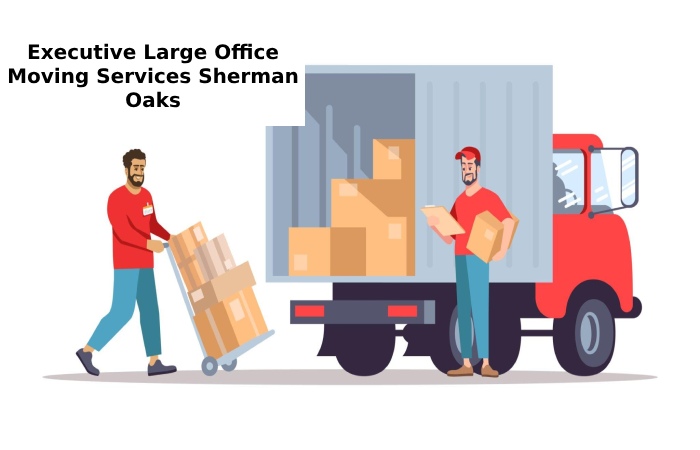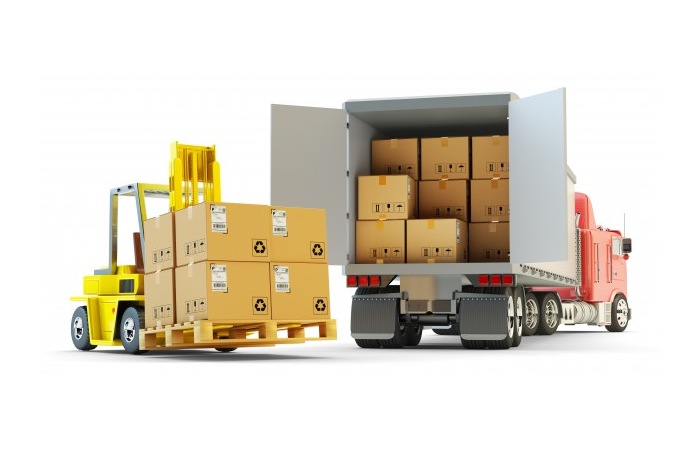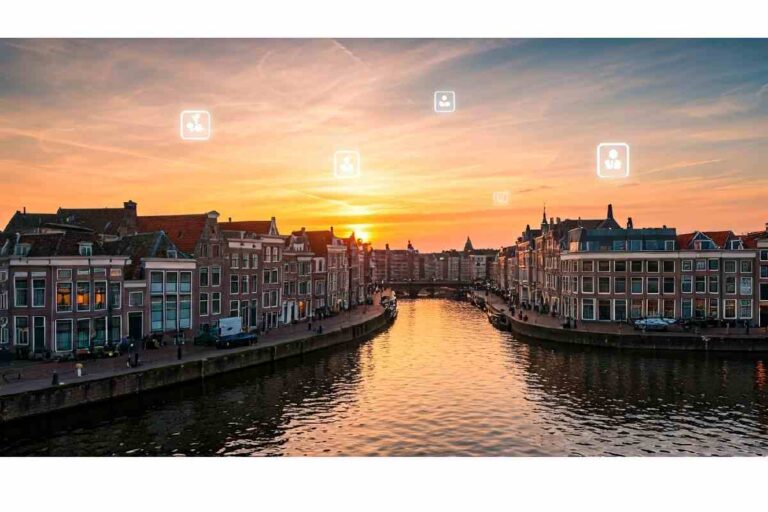How do we operate climate-neutrally? How do we arm ourselves against cyber attacks? And how do we work tomorrow? Seven global trends in the C-suite check. Mega Trends
If you are concerned with the future, megatrends are an important outlook for tomorrow. They are drivers that fundamentally change the world, seismographs for what is to come.
And yet they are not a law of nature, but a result of our work and actions – which in turn calls for answers that politics, business, and society must provide.
Whether decarbonization or digitization, new life science technologies or new types of insurance fraud: In an inventory, we analyze some of the most important megatrends and show how companies and decision-makers can use this knowledge to shape the future.
Decarbonization
Cold War 2.0
Behavioral economics
Manipulated media
Future of work
Microbiomes
Synthetic biology
1.Decarbonization: the end of coal, oil, and gas
To stop climate change, it is not enough to limit carbon dioxide emissions. We even have to reverse them.
Droughts and forest fires, storms, rising sea levels: the consequences of climate change are becoming more and more noticeable. They are increasing the pressure on the international community to limit global warming to 1.5 degrees Celsius.
With the Paris Contract on Climate Change, the signatory states committed themselves to make their contribution to compliance with the climate target and to ensuring this through national legislation. To convert climate-neutral by 2050, the decarbonization of the economy – more
precisely: the end of the use of fossil fuels and the green transformation of the economy – is the order of the day.
CO2 emissions: lower first, then reverse
While the first industrial revolution was still driven by fossil fuels, national economies and thus companies worldwide are now met with the task of reducing their carbon dioxide emissions in the short term and producing completely climate-neutral in Germany by 2050, for example.
This transformation is built on the conversion of generation to renewable energies (water, wind, and sun), the use of green hydrogen for climate-neutral production in industry, harmful emissions (NETs), and an increase in energy efficiency.
Also, there is carbon capture and storage (CCS), i.e., large-scale carbon dioxide storage underground.
However, climate neutrality is not enough for the 1.5-degree target.
Therefore, some companies go one step further: With the help of technology and natural CO 2 sinks, they want to become CO 2 negative, i.e., remove more carbon dioxide than they emit.
A variety of measures (e.g., afforestation) are intended to remove CO 2 from the atmosphere.
Carbon is found in many products and materials – from beverages to chemicals, diamonds, plastics, building materials, fertilizers, and fuels.
Almost all of the carbon is refined from petroleum or natural gas. If it were exchanged for recycled carbon or carbon obtained from the air, global emissions could fall by up to 10 percent.
Technical solutions in the fight against carbon dioxide
Companies such as Carbon Engineering from Canada or Climeworks from Switzerland use chemical absorbers to filter carbon dioxide directly from the air to then reuse or store it as fertilizer or synthetic fuel.
The process is energy-intensive, but there are solutions: The US company Global Thermostat, for example, uses industrial waste heat to produce energy. Salzgitter AG is going even further and is testing how coal can be replaced by natural gas and hydrogen in steel production. Up to 95 percent of today’s CO 2 could be avoided right from the start.
Steel companies in Germany and other European countries rely on the use of green hydrogen for climate-neutral steel production.
New technologies are being used that capture highly concentrated greenhouse gases from waste from large emitters such as power plants, foundries, or chemical plants. The US company Lanzatech does this with Synbio-Bacteria, which converts CO 2 into fuel and chemicals. NovoNutrients’ specially cultivated microbes grow on CO 2 waste and are used as feed for aquaculture.
Around 11 percent of global CO 2 emissions arise in the construction industry.
After water, cement is the second most frequently used resource globally and is very carbon-intensive: every kilogram produced generates just as much CO 2. CCS plays a major role in the cement industry because reducing CO 2 emissions to zero is not (yet) possible here.
Companies are also working on other solutions, such as making concrete that binds carbon. An alternative to concrete and steel building materials is wood, provided it comes from sustainable forestry.
Decarbonization: the minus as the goal
Companies should lead the way when it comes to global challenges such as climate change. This is not only demanded by more and more investors, but also by the younger generation.
And there is even more possible than “just” being climate neutral: Microsoft, for example, wants to become CO2-negative by 2030 and remove all the carbon it has emitted since its inception.
Whether technological progress, social responsibility, or the development of new opportunities through the green transformation – there is no alternative to rapid decarbonization; it will determine the future of companies.
Anyone who wants to produce and grow in the future can only do so in a climate-neutral way – or not at all.
2.Cold War 2.0: What are the risks for companies
Fake news, cybercrime, digital populism: a battle rages worldwide for market leadership and the technological infrastructure of the future.
The Internet has unlocked up a new field of digital information warfare. There is a battle raging over “alternative facts” and “fake news,” a contest between “likes” and “dislikes,” which are being used more and more as a means of politics.
The boundaries between politics and business, markets and technologies are becoming blurred. Protectionism and state intervention have become normal. Whether punitive tariffs or blacklists for companies, whether cyber-attacks or disinformation campaigns – even internationally active German companies that are intertwined with global supply chains can get caught up in the maelstrom of such disputes
The techno-economic cold war
The infrastructure for technologies that will shape our lives for decades is currently emerging. The structure of the 5G networks is a prime example.
Those who set standards early on dominate in the long term. States are increasingly intervening in this competition in favor of domestic players, also for fear of cyber attacks on critical infrastructures.
- With the “Made in China 2025” creativity, the People’s Republic wants to become the market leader in specific technology sectors. To achieve this goal, China wants, among other things, to restrict access for foreign companies.
- In the dispute over technological supremacy, the US is cutting off China’s supply of critical technologies such as computer chips.
- India is pursuing similar goals with the “Make in India” program: Indian companies should manufacture more locally, import less, and export more innovative products, especially for industry.
- With tax breaks and easier access to credit, Taiwan’s government incentivizes domestic companies to move their manufacturing back out of China.
- Several countries exclude Huawei from the 5G expansion due to security concerns or are setting the hurdles very high.
- The US government has vulnerable to ban the Chinese-based social media platform TikTok.
- Chinese and American media companies are becoming the pawn of the conflict between their governments.
- Russia prohibits the sale of computers and smartphones that do not have Russian software preinstalled.
Europe must act
In this changing world, Europe too can quickly become a battlefield for techno-economic conflicts. In particular, the dependence on American IT groups could turn out to be an Achilles heel for European institutions and private companies.
It would be imaginable, for example, that the USA could restrict the European or German business of its digital corporations in the course of a dispute over Russian energy supplies.
Washington could make access to cloud-based services from well-known industry giants more difficult – with massive consequences.
Digital sovereignty
The EU has recognized how difficult it can be to be dependent on individual IT providers. The current strategy aims to strengthen Europe’s digital sovereignty and position itself as a uniform EU. One of the key projects is the GAIA-X initiative funded by Germany and France. The goal is a reliable and secure cloud infrastructure for Europe.
The EU states are also redefining the rules in the area of critical infrastructures. The lifelines of modern society are no longer just water supplies, electricity, and data networks;
The same applies to the food supply, health, transport, and financial sectors: an impairment would have severe consequences for the economy, the state, and society. Accordingly, in IT security, for example, the demands placed on companies that operate in these sectors are increasing. You have to reckon with ever-stricter certifications and requirements.
In this changing environment, it is essential for companies to eliminate risks and seize new opportunities:
- Fix your own weak points, reduce dependencies
- conform to stricter standards and certifications
- Identify new business opportunities and find gaps when outside providers drop out
If the EU removes rag carpets and agrees, for example, on a uniform procedure for the 5G expansion, space will be created for new European players.
Invisible threat
If war is the “continuation of government by other means,” as the Prussian General Carl von Clausewitz put it, this is all the more true of the new, techno-economic Cold War.
It is a permanent argument that is conducted in secret. Cyber attacks are one weapon; disinformation is another.
In recent years, for example, an assembly of hackers (“Winnti”) is said to have carried out cyberattacks against German companies, including six DAX companies.
IT security experts even speak of a digital mercenary force—your goal: industrial espionage. The attackers are interested in trade secrets, organizational charts of certain parts of the company, and information about the IT systems.
The aim of disinformation campaigns, on the other hand, is not money, infrastructure, or data but rather to influence public opinion. Information on the Internet is used more and more manipulatively, half-true, or as a propaganda measure. Mega Trends
Since the Cambridge Analytica scandal in the US presidential campaign in 2016, the US has been discussing election manipulation through online advertising. Numerous media reports on misinformation and negative campaigning connected with the current US elections show that combating them in social networks is a serious problem in this year’s election campaign. Mega Trends
Protect reputation
Cyber attacks and disinformation campaigns are asymmetrical methods that can hardly be traced. With little effort, they can do a lot of damage. It has never been so easy today to discredit people and companies. Mega Trends
Cybersecurity is more important for business and politics than ever before.
If rumors do not destroy the reputation or cause the share price to crash, companies should conduct preventive reputation management, identify attacks early on and react quickly. Mega Trends
In times of asymmetrical disputes and conflicts, crisis management should be prepared for everything.
3.Behavioral Economics: How human action becomes a commodity
Our behavior creates valuable data. Corporations and governments are taking advantage of them in increasingly sophisticated ways.
Some movement data here, a health scoring there: In more and more countries, the state collects more data. What is happening to them?
There is no worldwide answer to this question – also because individual data protection is more important in Europe than in the USA and Asia. Mega Trends
But one thing is sure: the upcoming has long since begun. Human behavior becomes a commodity – and just like customer data, it is measured, standardized, and traded. With considerable advances in behavioral economics and emotional AI at the same time, it is easier than ever for companies and governments to influence human behavior. This goal has always existed, especially in business, but the tools to achieve it are becoming more sophisticated.
On the way to the “Internet of Behavior.”
It is obvious that our life is generating exponentially more data than it used to be. The “Internet of Computers” has developed into an “Internet of Things” (IoT) in which intelligent devices collect data about their environment in real-time.
The next step is now evident – away from the “Internet of Things” and towards the “Internet of Behavior.” Many people reveal more about secret desires and fears in search engines than they would dare to do in a personal conversation.
Smartphones and social networks contain more information about our behavior, our preferences, and moods than many users are aware of.
Technical breakthroughs
Based on a growing amount of data, technology and science are advancing and can influence human behavior in increasingly sophisticated ways. Behavioral economics has created a new understanding of human motivations.
Companies and governments are now trying to encourage people to behave more sustainably – for example, so that they can eat healthier, be more farsighted when it comes to retirement provisions, or conserve resources and the environment.
Another technological revolution is emotive Artificial Intelligence (AI). Affective Computing is similarly interdisciplinary as behavioral economics and brings together computer science, psychology, and behavioral science. The result is machines that come very close to human action: Mega Trends
Imagine a virtual salesperson who can keep eye contact with hundreds of customers in different branches at the same time and adapt to accents, language level, and tone of voice.
In the UK, the government’s Behavioral Insights Team tries to encourage people to donate and be more tax honest. The Chinese Social Credit System goes many steps further in evaluating sensitive data.
4.Manipulated media: With authenticity seals against fake news
Fake pictures, videos, or podcasts threaten companies. It is high time for practical solutions.
Can we still trust what we see, hear and read? It has never been easier to create realistic articles, audio or video files about events that never happened. Shared on social media, they can spread like wildfire and influence public opinion and people’s behavior. Mega Trends
So far, election campaigns, politicians, and celebrities have been the main targets. Now manipulated media are also becoming a risk for companies – with fatal effects on the image, customers, or the share price.
New cyber threat to businesses
This makes companies vulnerable to fraud, defamation, extortion, and market manipulation – but also to the pre-filtering of news, information, and Co. Let the share price fall. A fake sound recording by an executive who admits to having bribed officials is fodder for blackmail – or targeted fake social media campaigns that lead to a wave of customer reactions.
In spring 2019, a large insurance company registered its first so-called fake president case. In this scam – also known as “CEO fraud” or “boss scam” – an artificial intelligence mimics the voice of a company boss – in real-time.
The alleged boss of the German parent company of an energy company asked the managing director of the British branch over the phone for an urgent transfer to a supplier. Even the German accent was believable. The money went to the account of the fraudsters. The damage: 220,000 euros. The insurer reimbursed the money. Mega Trends
Is there a solution to the problem?
Cyber attacks are nothing new in the business world. Phishing, spam, and malware have plagued companies since the advent of the Internet and have produced countless defense instruments.
But we need an entirely new set of antibodies against the risks of manipulated media. Cybersecurity firms, academics, and government agencies are working to authenticate videos, photos, and text on the Internet using a variety of techniques:
- Digital forensics: To detect forgeries, the method searches for inconsistencies in lighting and shadows in an image or flashing patterns in a video, for example.
- Digital watermark: Hidden marks in pictures and videos help identify fake content.
- Hashing and blockchain: this technique goes one step further. The chained data blocks of a blockchain build on each other and log all changes.
- Compliance and Integrity: This is about better risk analyzes and education of employees about fraud risks, cybersecurity, and integrity.
5.Future of work: the digital disruption
The working world of tomorrow will be different, accessible and flexible, and change our entire lives.
Imagine a world in which the word “flexible” applies to all areas of life. Mega Trends
Instead of looking forward to the end of the day and the weekend in the “nine-to-five job,” a good work-life balance is possible seven days a week. Continuous learning and “early retirement” accompany us through life, as individuals regularly take time for further training and longer breaks from work.
Work: Make consistent use of digitization
In Germany, the change in work culture began before COVID-19. During the pandemic, the proportion of employees who worked from home increased by around 20 percentage points to about 60 percent. In the future, up to 80 percent of employees could work from home.
Free time: When work is no longer the top priority
The centuries-old norm of the eight-hour working day and the five-day week is also shifting due to the extent of technological change. In politics, the topic of the four-day week comes up increasingly. IG Metall is pushing for the model to prevent job cuts in industrial companies during the pandemic. The course set during the Corona crisis could lead to permanent restructuring. To do this, societies, governments, and individuals must first determine how much working time is essential for life satisfaction and social cohesion.
Education: New working environments need new learning
The education sector is facing significant changes. In the future, the average employee will have not only several jobs but also several careers. Interdisciplinary knowledge will play an increasingly important role. Learning paths have to change in such a way that they are lifelong. Mega Trends
On the way to the new future
The change in our increasingly flexible work culture is in full swing. There is now an opportunity to completely reinvent work and life structures – and thereby increase innovation, productivity, and quality of life.
6.Microbiome: Microorganisms as great problem solvers
Research on microbiomes is still young, but it can open up important markets and provide solutions to global challenges.
Since 1766 there has not been a two-year summer drought in Central Europe like the one in 2018 and 2019, according to a study by the Helmholtz Center for Environmental Research.
This is all the more serious as agriculture will have to produce 56 percent more calories for up to 10 billion people by 2050. We need a solution for this discrepancy – and it could be tiny but highly effective in terms of mass: microorganisms.
How cows could become more climate-friendly
This may also apply to the increasing demand for milk and meat. If the global herd of cattle were a country, it would be the third-largest greenhouse gas emitter in the world: The methane gas produced in the intestinal microbiome of cows captures 30 times as much heat as CO 2. Researchers have found that a small subset of this microbiome affects methane emissions and milk productivity. If a targeted, widespread change in cattle microbiome were successful, the cows would be more efficient and more climate-friendly. Some animals already have low methane and high milk production microbiome in their DNA. The good thing: it is inheritable. Mega Trends
What microorganisms have to do with the COVID-19 pandemic
According to forecasts, around 70 percent of people will live in cities by 2050. Here, too, microorganisms play a significant role. Every room, every building houses a unique microbiome, determined by its residents and their activities, by heating, cooling and ventilation, sanitary facilities, and the outside air.
Your contact person
Alexander W. Nuyken
Alexander W. Nuyken
Head of the Life Sciences Sector in Strategy and Transactions | EMEIA Mega Trends
The COVID-19 pandemic has raised concerns about the corona virus’s possible presence in the microbiome of our built environment. As a result of the pandemic. We will likely gain much more insight into the microbiomes of our rooms and better understand whether they pose health threats.
7.Synthetic biology: recreating nature in an improved way
Changes to the genome of a living being have always aroused skepticism. But what if they help the living being itself and us humans?
88445In genetic research. We in Germany have been thinking of horror scenarios of “designer babies” and DNA tests at job interviews for decades. For example, 80 percent of German consumers reject genetically modified foods – in the USA. However, these have been in supermarkets for years.
But there is a difference between skepticism and fear, which often results from insecurity and ignorance. Synthetic biology is a highly complex field of science that offers opportunities to improve our lives.
At the interface between biology and technology. Synthetic biology forms an interdisciplinary branch of the life sciences in which biologists, chemists, and engineers do research together. Their goal: to replicate or modify biological systems in the laboratory in such a way that they provide a benefit for society. This can range from therapy to fuel. Mega Trends
The best known are the first images of meat in the Petri dish, artificially created in the laboratory. One day, the labs might deliver not only steaks but also artificially bred leather shoes, bioplastic cars powered by biofuels. Or the daily dose of a drug that keeps the hereditary burden of Alzheimer’s disease in check in a family.
Why an ethical classification is imperative
The rapid development progress of some technologies often brings far-reaching changes and thus potential dangers. An ethical discussion and classification should therefore accompany synthetic biology. Suppose this succeeds with a high degree of responsibility. In that case. It will in all probability come true what the Apple inventor Steve Jobs predicted before his death in 2011: “The most significant innovations of the 21st century will emerge from the interface between biology and technology. A new era begins here. ”
Also Read : The Ten Most Common Product Promotions




 Packing and shipping require meticulous attention to detail because significant amounts of delicate equipment and
Packing and shipping require meticulous attention to detail because significant amounts of delicate equipment and 









